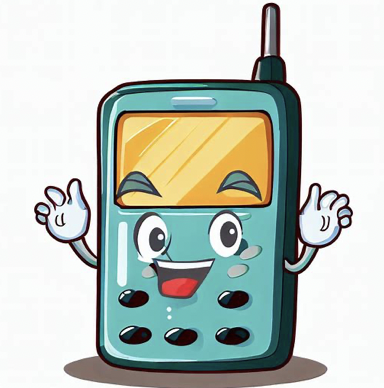When it comes to purchasing a new iPhone, many consumers are often concerned about the price.
With each new release, Apple introduces advanced features and improved technology, but these upgrades often come with a hefty price tag.
However, as time goes on, the prices of older iPhone models tend to drop.
How Long After Release Do Old iPhone Prices Drop?
The prices of old iPhones generally start to drop within a few weeks to a few months after the release of a new model, as retailers aim to clear out older inventory.
For example, when the iPhone 15 came out, prices of older models (e.g., iPhone 14, iPhone 13, etc.) would start dropping shortly after release.
Below we’ll look deeper at how long it typically takes for old iPhone prices to decrease and the factors that influence these price drops.
Table of Contents
The Initial Price Drop
After the release of a new iPhone model, the initial price drop for older models usually occurs within a few months.
This drop is often influenced by several factors, including the demand for the new model, the availability of refurbished or pre-owned devices, and the overall market conditions.
Apple typically reduces the prices of older iPhone models when a new model is released to encourage consumers to upgrade.
The initial price drop can range from 10% to 30%, depending on the popularity of the new model and the inventory of older devices.
Supply and Demand
One of the key factors that determine how quickly old iPhone prices drop is the supply and demand dynamics in the market.
When a new iPhone model is released, there is usually a surge in demand as consumers rush to get their hands on the latest technology.
This high demand for the new model often leads to a decrease in demand for older iPhone models.
As a result, retailers and resellers may lower the prices of older devices to attract buyers and clear their inventory.
The extent of the price drop will depend on the level of demand for the new model and the availability of older devices in the market.
Refurbished and Pre-Owned Devices
Another factor that influences the price drop of old iPhone models is the availability of refurbished and pre-owned devices.
As time goes on, more and more people upgrade to the latest iPhone models, leading to an increase in the number of older devices available for resale.
Refurbished iPhones are devices that have been returned to Apple or authorized service providers, repaired if necessary, and then sold at a lower price.
These devices often come with a warranty and are a popular choice for budget-conscious consumers.
Pre-owned iPhones, on the other hand, are devices that have been previously owned by individuals and are sold directly by the owners or through third-party platforms.
These devices are typically sold at lower prices compared to new or refurbished iPhones.
The availability of refurbished and pre-owned devices in the market can put additional downward pressure on the prices of older iPhone models.
As more of these devices become available, consumers have more options to choose from, leading to further price reductions.
Market Conditions
The overall market conditions also play a role in determining how quickly old iPhone prices drop.
Factors such as the state of the economy, consumer spending patterns, and the competition in the smartphone market can all influence the pricing strategies of retailers and resellers.
In a highly competitive market, retailers may be more inclined to lower the prices of older iPhone models to attract customers and gain a competitive edge.
On the other hand, in a sluggish economy or during periods of low consumer confidence, retailers may be less likely to reduce prices as they try to maintain their profit margins.
Case Study: iPhone 11
To provide a real-world example, let’s take a look at the price drop pattern of the iPhone 11, which was released in September 2019.
The iPhone 11 was a highly anticipated model, offering significant improvements over its predecessor, the iPhone XR.
Within the first three months of its release, the price of the iPhone 11 dropped by around 15% on average.
This initial price drop was influenced by the high demand for the new model and the availability of refurbished iPhone XR devices in the market.
Over the next six months, the price of the iPhone 11 continued to decrease gradually.
By the one-year mark, the price had dropped by approximately 25% compared to its launch price.
This price drop was driven by the release of newer iPhone models, such as the iPhone SE (2020) and the iPhone 12 series.
After the one-year mark, the price of the iPhone 11 stabilized, with smaller price reductions occurring over time.
The availability of refurbished and pre-owned devices played a significant role in maintaining a steady supply of older iPhone 11 models in the market.
FAQs: How Long After Release Do Old iPhone Prices Drop?
1. How long does it take for old iPhone prices to drop after a new release?
The initial price drop for older iPhone models usually occurs within a few months after the release of a new model.
2. What factors influence the price drop of old iPhone models?
The price drop of old iPhone models is influenced by factors such as supply and demand dynamics, the availability of refurbished and pre-owned devices, and overall market conditions.
3. How does supply and demand affect old iPhone prices?
When a new iPhone model is released, the demand for older models decreases, leading to a decrease in prices to attract buyers and clear inventory.
4. What are refurbished iPhones?
Refurbished iPhones are devices that have been returned to Apple or authorized service providers, repaired if necessary, and then sold at a lower price.
5. How do pre-owned iPhones affect the price drop of old iPhone models?
Pre-owned iPhones, sold directly by owners or through third-party platforms, offer lower-priced alternatives to new or refurbished iPhones, putting downward pressure on prices.
6. How do market conditions impact old iPhone prices?
Market conditions, such as the state of the economy and competition in the smartphone market, can influence retailers’ pricing strategies for older iPhone models.
7. What was the price drop pattern for the iPhone 11?
The price of the iPhone 11 dropped by around 15% within the first three months of its release and continued to decrease gradually over the next six months.
By the one-year mark, the price had dropped by approximately 25% compared to its launch price.
8. What role do refurbished iPhone XR devices play in the price drop of the iPhone 11?
The availability of refurbished iPhone XR devices in the market influenced the initial price drop of the iPhone 11, as consumers had the option to choose between the newer model and the refurbished previous generation model.
9. How long does it take for old iPhone prices to stabilize?
After the initial price drop, old iPhone prices tend to stabilize, with smaller price reductions occurring over time.
The availability of refurbished and pre-owned devices helps maintain a steady supply of older models in the market.
10. Are there any seasonal trends in old iPhone prices?
There may be seasonal fluctuations in old iPhone prices, with potential discounts during holiday seasons or special sales events.
However, these fluctuations are in addition to the overall price drop pattern discussed earlier.
11. Do all iPhone models experience the same price drop pattern?
No, the price drop pattern can vary depending on factors such as the popularity of the model, the availability of refurbished or pre-owned devices, and the competition in the market.
12. Can I expect further price drops after the one-year mark?
While further price drops may occur after the one-year mark, they are typically smaller compared to the initial drop.
The availability of refurbished and pre-owned devices continues to influence the pricing of older iPhone models.
13. Should I wait for a specific time to buy an older iPhone model?
Timing your purchase can be beneficial if you are looking for the best deal.
Waiting a few months after the release of a new model can often result in lower prices for older iPhone models.
14. Where can I find refurbished or pre-owned iPhones?
Refurbished iPhones can be purchased directly from Apple’s official website or authorized retailers.
Pre-owned iPhones can be found on platforms such as eBay, Swappa, or through local classified ads.
15. Are there any risks associated with buying refurbished or pre-owned iPhones?
While buying refurbished or pre-owned iPhones can offer cost savings, there are some risks involved.
It is important to ensure that you are purchasing from a reputable seller and to thoroughly check the condition of the device before making a purchase.
Summary
Old iPhone prices typically drop within a few months after the release of a new model.
Factors such as supply and demand dynamics, the availability of refurbished and pre-owned devices, and overall market conditions influence the extent of the price drop.
The initial drop can range from 10% to 30%, with further gradual reductions over time.
The availability of refurbished and pre-owned devices helps maintain a steady supply of older iPhone models in the market.
Timing your purchase and considering refurbished or pre-owned options can be beneficial for those looking to save money on an iPhone.


